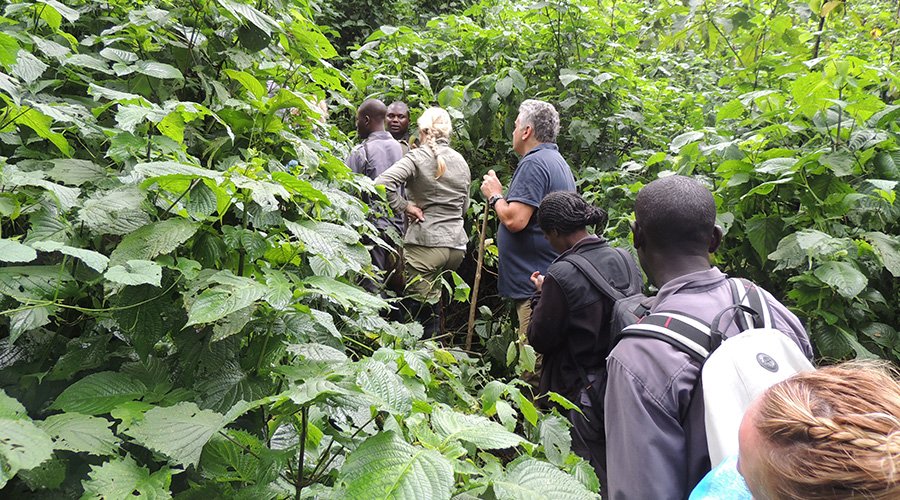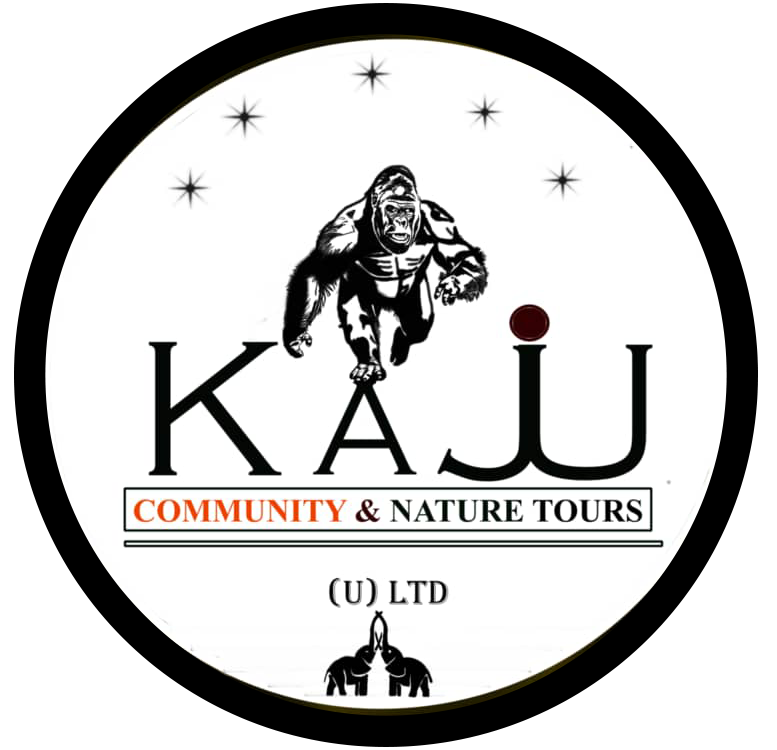Gorilla trekking in Uganda is one of the most exciting and meaningful wildlife experiences accessible anywhere in the world. This whole guide tells you everything you need to know about what to expect, how to prepare, and how to make your trip memorable. This guide gives you all the information you need to see these beautiful animals up close in their natural environment, whether you’re going through the dark forests of Bwindi Impenetrable National Park or the rocky landscapes of Mgahinga Gorilla National Park.

Gorilla trekking is a safe way to see mountain gorillas. Small groups of eight tourists trek through forests to spend time watching gorillas in their natural environment.
This is a once-in-a lifetime opportunity to experience it under the watchful eye of experienced guides and rangers. It is also an important part of conservation efforts, helping to raise money to protect and preserve the rare mountain gorillas.

Gorilla trekking fans flock to Uganda because it is the only place where you can see these beautiful animals in their natural environment. Uganda is home to more than half of the world’s mountain gorillas, making it an incredible place for these amazing creatures. Bwindi Impenetrable National Park and Mgahinga Gorilla National Park, which are also significant for the protection of other endemic flora and fauna, are home to Uganda’s gorillas.
For adventurous travellers, Bwindi stands out as a great place for gorilla trekking because of its misty, ancient jungles and rough terrain that make the trip challenging and worthwhile. In this area, surrounded by thick forests, tourists can go on extensive hikes that put them in close contact with gorilla families, each with its own unique social structure and dynamics. Because there are so many different gorilla groups in Bwindi, each hiking experience is different and gives you a chance to learn more about the intricate lives of these gentle giants.
Uganda’s dedication to protecting wildlife and promoting eco-friendly tourism makes it an even more appealing place to go gorilla trekking. Conservation efforts in the country, led by organisations like the Uganda Wildlife Authority, focus on keeping gorilla areas safe and making sure these rare species are healthy. People who go gorilla trekking in Uganda not only get to see mountain gorillas in the wild, but they also help protect these famous animals and their fragile ecosystems.
Getting a gorilla trekking permit is the first thing that tourists who want to experience the amazing world of mountain gorillas must do. The Uganda Wildlife Authority or authorised tour companies can help you get a permit. As of 2024, foreign non-residents pay USD 700 for a permit, but it’s advisable to check the website for the latest price. The permits typically sell out during the peak season, from June to September, so it’s advisable to book them several months in advance to ensure availability and prevent disappointment.
The best times to go gorilla hiking are during the dry seasons, which are from December to February and from June to September. During these times, the weather is generally warm, the tracks are less wet and slippery, and the chance of getting malaria is lower. However, bear in mind that Bwindi and Mgahinga, being tropical rain forests with a warm climate, can experience rain at any time of the year, even during expected dry spells. Trekkers should be ready for anything by bringing the right rain gear and strong climbing boots so they can easily and comfortably get around the rough terrain.
Enough planning will greatly improve your whole gorilla trekking experience and guarantee your safety and comfort in the thick bush. What to pack is listed here:
Footwear: You really need to wear sturdy, waterproof hiking boots. Rain or shine, the ground may be muddy, steep, and uneven. Ankle support done well will help avoid injury.
Clothing: Wearing long trousers and shirts is crucial to avoid bug stings and prickly plants. To keep yourself comfortable, choose lightweight, moisture-wicking materials. Layering is a good idea since the weather might change quickly.
Rain Gear: The tropical environment means that unexpected rain might fall. For a dry and pleasant walk, you really must have a waterproof jacket and rain trousers.
Gloves: For defence against nettles and other prickly plants you could come across, gardening gloves are advised. Better grip is also offered while negotiating difficult terrain sections.
Hydration and Snacks: Trekking may be physically taxing, so bring lots of water to keep hydrated. Energy bars, dried fruit, and almonds are examples of high-energy foods that might help you stay energised throughout the walk.
Backpack: Water, food, and extra layers of clothing may all be carried in a tiny, waterproof rucksack. Verify whether it offers enough back support and is comfortable.
Camera Gear: You really must have a camera with a decent zoom lens in order to capture the occasion. Additionally necessary are extra memory cards and batteries, as you don’t want to pass up any chance to take pictures.
Other Essentials: Remember to cover up with sunscreen, a hat, and sunglasses. Using insect repellent is essential to keeping mosquitoes and other bugs away. Your experience may be improved with binoculars, which let you see different creatures.
It is very helpful to hire a guide for your gorilla trekking activity. Porters, who you can hire for a fair price, can help you by carrying your pack. This way, you can hike more easily without having to carry a big load. This service is especially helpful on parts of the path that are high or difficult, where staying balanced and saving energy are very important. Having a porter also helps the local economy by giving families in the area much-needed extra money.
Guides are very important for making sure that climbing is safe and enjoyable. These professionals have been through the thick forest many times and know the best ways to get through it by using their in-depth knowledge of the land and the animals that live there. Guides can inform you a lot about the gorillas’ behaviour, social structure, and the state of their conservation, which will help you understand and appreciate these beautiful animals even more. Their knowledge ensures that walkers stay away from the gorillas in a way that doesn’t hurt the animals or their surroundings.
The gorilla trekking experience may take anything from a few hours to a whole day, depending on the precise location and activity of the gorilla family being tracked. Early in the morning, you’ll have a briefing by the Park warden at the park offices. This is where you’ll learn important details about the trip, safety rules, and how the gorilla’s behaviour
In the beginning of your walk, you’ll be led by experienced guides through thick forest, steep hills, and sometimes muddy paths. Even though the walk can be hard on the body, the excitement of seeing the gorillas keeps everyone upbeat. While travelling through the forest, there are many things to look forward to, including interesting flora and fauna
Once you find the gorilla family, you will have the amazing chance to watch these beautiful animals in their natural environment for one hour. During this valuable time, you can watch them do their daily tasks, such as eating, cleaning, playing, and taking care of their young. Being so close to the gorillas and watching their complicated social interactions and behaviours is both thrilling and deeply humble.
To keep both the tourists and the gorillas safe, the guides will make sure that all the rules are followed. To keep the animals from getting stressed, this means keeping a safe distance, speaking quietly, and not making direct eye contact.
The Gorilla Habituation Experience is a unique and engaging chance to spend more time with gorilla families that are undergoing habituation, giving people who want to bond with gorillas more deeply this chance. Visitors can only do this one-of-a-kind experience in Uganda. They can join researchers and guides as they do the daily tasks that are part of the habituation process, which is necessary to get wild gorillas used to people being around.
The habituation process is slow and careful, and it can take up to several years. During this period, people regularly introduce gorillas to them until they begin to act naturally, without feeling threatened. Participants in the Gorilla Habituation Experience get to witness this process firsthand and learn more about how gorillas behave, connect with each other, and form social groups.
The experience starts early in the morning with a briefing at the park offices. Next, there is a long trek through the forest. In normal gorilla trekking, you only have one hour with the gorillas. However, on the habituation journey, you can spend up to four hours with them. This extra time gives you a better understanding of the gorillas’ daily lives, from eating and searching for food to playing and cleaning.
Being a part of this habituation process is both educational and thrilling, and it gives you a deep respect for the work that goes into protecting gorillas. People can see experts taking notes, making observations, and sometimes even interacting with the gorillas in ways that help them get used to the new environment. This interactive method not only helps you learn better, but it also directly supports the current protection efforts.
Embarking on a gorilla trek is an adventure of a lifetime and a rare opportunity to directly contribute to the conservation of these magnificent animals and their environment.
